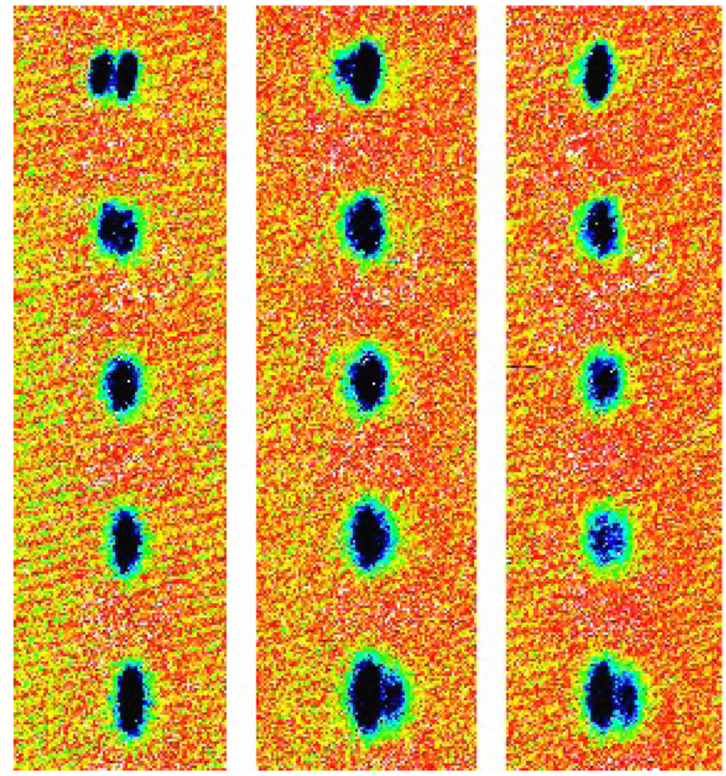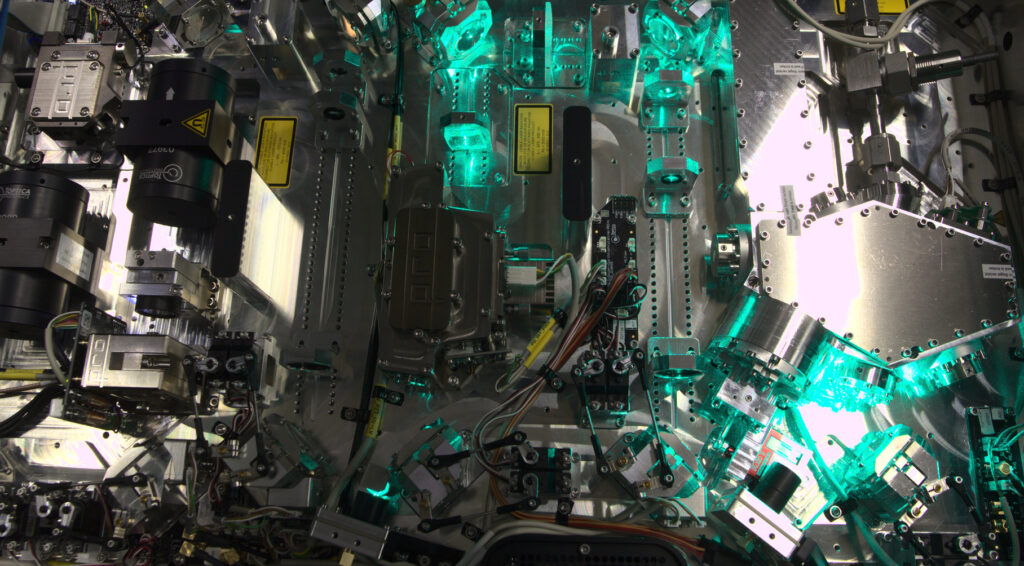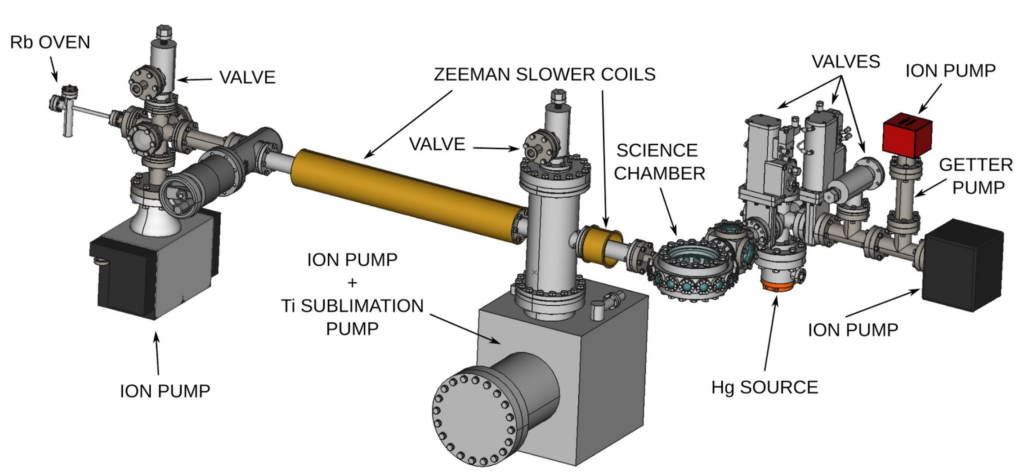Ultra-cold Matter
Our group explores many different facets of ultra-cold matter. Our experimental researches include ultra-cold atomic gases, ultra-cold binary molecular systems, and degenerate quantum gas – Bose-Einstein Condensate (BEC).

BOSE-EINSTEIN CONDENSATE

Bose-Einstein condensation is a form of quantum degeneracy which occurs when the phase-space density in the investigated system reaches unity. This requires substantial increasing of the atomic de Broglie wavelength by reducing atomic velocities, i.e., cooling, and reducing their mean distances, i.e., compression, while avoiding strong atom-atom interaction. Typical approach to reach this objective is employment of the laser cooling together with magneto-optical and magnetic trapping techniques.
Our group was the first group in Poland to achieve BEC. It consists of 500000 87Rb atoms. We study the dynamics of the ultra-cold atomic cloud of 87Rb atoms during the phase transition into the BEC state as well as the magnetic properties of so-called spinor BECs.
ULTRA-COLD MOLECULES

We have developed a new experimental platform to enable probing fundamental physics and search for new physics beyond the Standard Model by means of ultracold mixture of mercury and rubidium atoms. Our unique dual-species setup provides excellent opportunities for ultra-cold collisional studies. For creation of ultracold RbHg molecules we use photoassociation (PA) technique carried out near the D1 transition in Rb. Taking advantage of the optical frequency comb coupled to our system we measure absolute frequency of PA resonances for various Rb-Hg isotopologues. Electronically excited RbHg molecules can be used as a base for stimulated Raman adiabatic passage process (STIRAP) which in turn may lead to absolute ground state of RbHg molecule. Such molecule, sharing all the interesting properties of the open-shell molecules, provides additional opportunities that come from its very high mass. Heavy polar diatomic molecules are leading candidates for electric dipole moment of the electron (eEDM) searches which could provide model-independent evidence of new physics beyond Standard Model. Among polar molecules, mercury-containing diatomic systems are especially suitable for eEDM. The enhanced eEDM sensitivity of Hg-containing polar molecules comes from the contraction of their valence 6s1/2 and 6p1/2 orbitals due to the weaker screening by the outer-most core d electrons in Hg.

Schematic of the vacuum setup for cooling and trapping of Rb+Hg mixture.